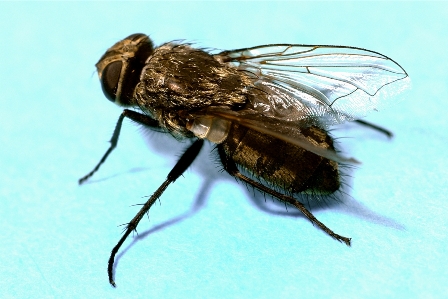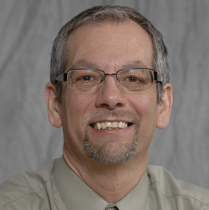Cluster flies (Pollenia rudis), also called attic flies, are about ¼- to 3/8-inch long and dark gray with yellowish or cream colored abdomens. They can be positively identified by the golden hairs on top of the midsection or thorax. Cluster flies are much slower than most flies, and can easily be swatted, especially during the winter months.
These flies live mostly outdoors, and females deposit their eggs in cracks in the soil. Larvae/maggots hatch and feed on earthworms. Even though there are many of these insects around, they aren't pests during most of the year.
So how do you end up sharing your house with them? As the weather gets cooler in the fall, they look for places to overwinter. Starting in October, cluster flies gather on the south and west sides of homes and buildings where they can often be seen in great numbers. They find cracks and seams, and cluster in attics or upper peak locations of structures. Once in a building, they will be seen only on warm days or when some wander into the heated living portions. They get into interior rooms through light fixtures, window casings and door frames. Cluster flies don't reproduce or cause maggots inside the home, and they're not after food. Indoors they usually fly slowly near windows, lights, and ceilings.
To control these flies, first try to keep them from entering attic spaces by sealing and caulking openings. If the insects are already in the attic or it isn't possible to seal the area, insecticides can be used. If area is closed in and not above a location where food is prepared, the best method is to (1) fog the overwintering areas with pyrethrin/pyrethroid foggers and (2) install insecticidal residue strips. ALWAYS READ AND FOLLOW ALL LABEL DIRECTIONS ON ALL PESTICIDES!

